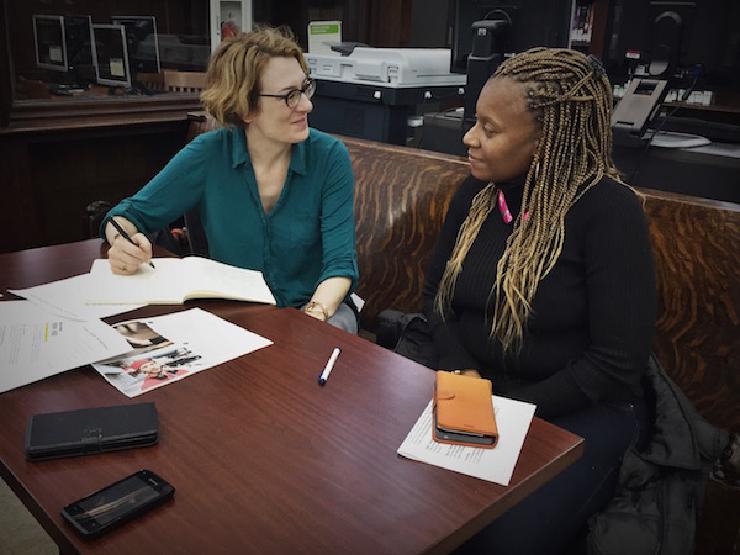In this installment of our series on resources for field research, we discuss the participant’s bill of rights. Additional resources include screeners and model releases for photography.
Why Consent Matters
Field research such as interviews and observations are an important part of Human-Centered Design. As important as learning about first-person, lived experiences is to the design process, the act of participating in an interview can feel awkward. There is an inherent power dynamic that puts researchers in a dominant position; for all that participants know, once they share a personal story, researchers are free to use it as they please.
While an interview may seem innocuous, it can put participants in harm’s way when handled improperly. Consent is a safeguard that stems from a collection of unethical scientific studies such as the Tuskegee experiment, where Black men who had syphilis were not told that they were infected, and not told that their condition was the primary reason for the study. This and other experiments from earlier eras caused lifelong trauma for their participants.
While research on technology projects may seem less dangerous than medical experiments, they can also harm participants. For example, people can suffer serious consequences from online behavior, including lowered credit scores, loss of livelihood, and threats to their safety or the safety of their loved ones. When a researcher shares participants’ stories, they are vulnerable to similar consequences if those stories can be traced back to participants through personally-identifiable details.
Ethical researchers generally use a consent form that both informs and assures participants that they have rights. This is called “informed consent,” and by signing the consent form, participants acknowledge that they understand what kinds of data are being gathered and how the data will be used.

Balancing the power dynamic
We use the phrase “participant’s bill of rights” for our informed consent document to convey that the participant has control over aspects of the process. There are three main areas in the bill of rights:
-
The power to ask questions: Participants are empowered to ask questions and give feedback about the interviewer, including speaking to a superior. The form should include contact information for the interviewer’s superior.
-
Compensation just for showing up: Participants can refuse to answer individual questions, refuse to participate, or leave, but still be compensated.
-
Controlling what’s captured and how it’s shared: Participants understand that researchers will not record the interview, take their photo, or quote them unless participants give their consent. Researchers will take appropriate measures to contact participants about any media they want to use publicly, and participants can review the media content before it is shared. They can also request the removal of any materials that have already been shared publicly.
Example bill of rights
Below is an example of a participant’s bill of rights.
We respect you and appreciate your time. Everyone participating in an interview has the following rights:
- I can ask questions about the interview, the organization, or the interviewer at any time
- I do not have to answer any question that I do not want to
- I can refuse for the interview to be recorded by video or audio, and I will still be compensated
- I can leave at any time, and I will still be compensated
- I can provide confidential feedback about my interview experience to the interviewer’s manager
- I must approve the use of any photos, audio, video, or anonymized quotes that are used publicly, whether on a website, on a blog, or in the press
- Even after a photo, video, or quote has been published, I have the right to request its removal at any point in the future
You can reach us anytime by calling or texting to [x] or by email at [x].
Tips to Consider
-
Select an approachable name for the document: In medical or psychological contexts, these consent documents are reviewed by Committees for the Protection of Human Subjects. As a term, “human subjects” may be technically correct, but it is distant and off-putting. At Simply Secure, we intentionally selected “participant’s bill of rights” to provide clear language and to empower participants.
-
Print the bill of rights on letterhead: Use your organization’s name and logo to make this look official.
-
Be accessible: Bring two copies of the consent form so that participants can take one with them. This should include contact information for someone in your organization who is not the interviewer in case the participant wants to discuss a negative experience.
-
Take only what you need: Be mindful of appropriately secure channels for communication. Safeguard necessary physical documentation in a locked cabinet, and shred anything that you have no reason to keep.
We invite you to adapt this bill of rights to suit your needs.